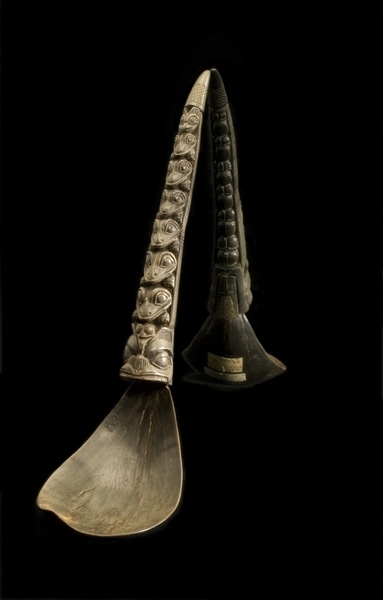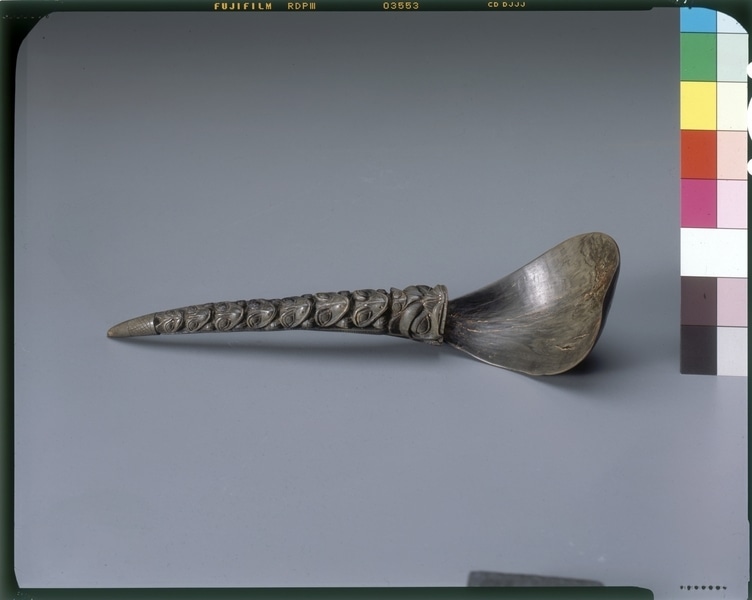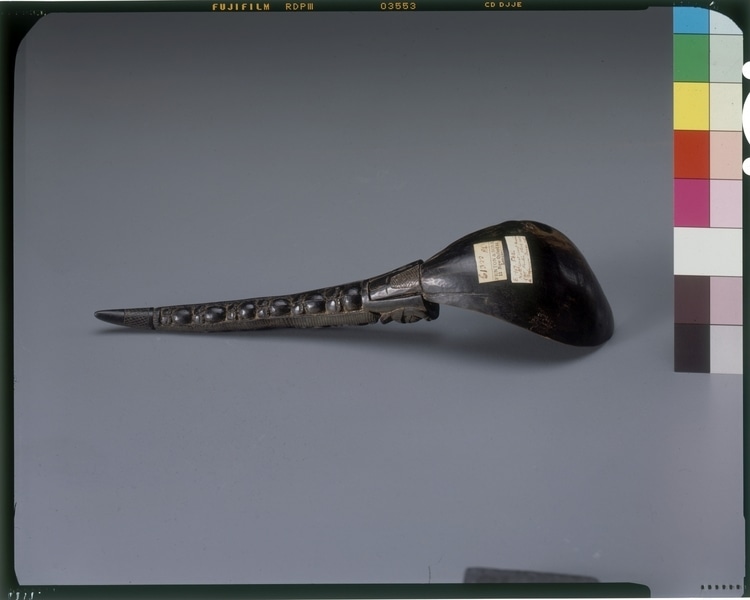Spoon Item Number: E 1907.562 from the MAA: University of Cambridge



Description
Very intricately carved handle of a spoon with a considerably smaller bowl. The handle depicts, from the tapered end towards the bowl, a small bear, and six steadily increasing in size frogs, culminating in a little frog between the ears of a bear. Perhaps the sequence represents a transformation, from a bear to a frog. On the reverse of the handle the attention to detail is apparent in the carefully carved bodies of all the creatures.The difference in size between the bowl and handle suggests the bowl was not the original, together with the possible cross-hatched beaver tail on the reverse of the bowl which does not correspond to the bear head at the start of the handle shaft. Despite the difference in size the spoon is still typical of other mountain-goat horn feast spoons of the Northwest coast (G.Crowther).; GoodCatalogue card for E 1907.562-3, notes in black ball point, 'Two spoons of black horn: the plain bowls are fastened to to curved taper handles elaborately carved in relief with totemic emblems.'
Context
The original European tribal names and, where possible, current tribal names have both been given in separate GLT fields.; Such spoons were used at feasts and potlatches, clearly demarcating the elaborate event from the everyday. The crests carved on the handle were possibly those of the owner representing a tangible connection between the lineage and the economic resources consumed during the feasting. The spoons were used for eating oolichan grease, berries, fish roe and fish (G.Crowther).The spoons were made by steaming and shaping the horn.Catalogue card for E 1907.562-3, notes in black ball point, 'Purchased Fentons/ Professor Bevan's donation.' This spoon was bought from Samuel Fenton, a dealer in ethnographic material, using money from Prof. Bevan's donation to the acquisition fund.Exhibited: On display in 'Gifts and Discoveries', LKS Gallery between May 25 2012 and February 18 2013.
Item History
- Made in British Columbia, Canada
- Received from Samuel Fenton and A A Bevan during 1907
What
- Name
- Spoon
- Identification Number
- E 1907.562
- Type of Item
- spoon
- Material
- horn and mountain goat horn
Who
- Culture
- Tlingit ?
- Received from
- Samuel Fenton and A A Bevan
Where
- Holding Institution
- MAA: University of Cambridge
- Made in
- British Columbia, Canada
When
- Acquisition Date
- during 1907
Other
- Keyword
- Ceremonial Objects; Food Preparation